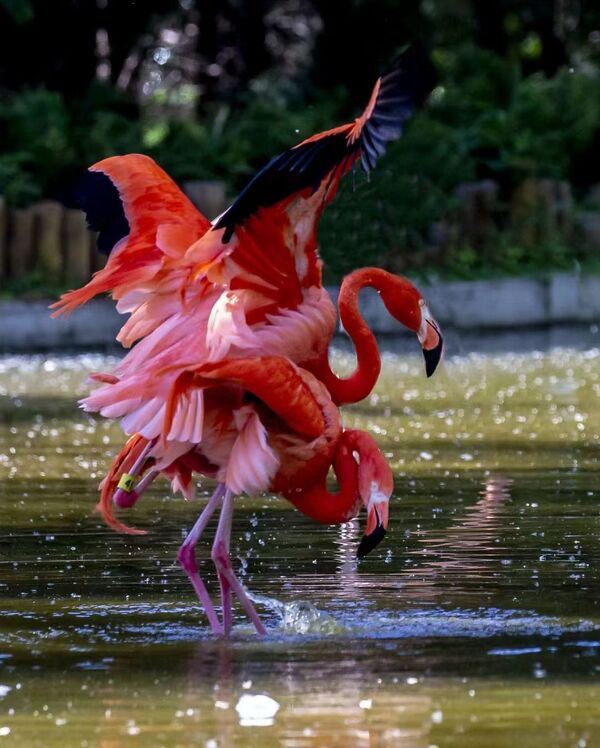Birds captivate us with their beauty, intelligence, and fascinating behaviors. Among the most intriguing are their courtship dances, elaborate rituals some species perform to attract mates. These displays not only highlight the diversity of avian life but also reveal the underlying evolutionary mechanisms driving such unique behaviors. In this article, we’ll explore which birds perform courtship dances, the purpose behind these rituals, and whether all birds participate in this dazzling behavior.

Courtship dances are a type of mating ritual where birds use specific movements, postures, or displays to attract potential mates. These dances often involve:
Elaborate choreography: Birds synchronize movements with precision.
Visual signals: Plumage displays, such as fluffed feathers or tail fans, often accompany dances.
Vocalization: Many species incorporate unique calls or songs to complement the dance.
The primary purpose of these behaviors is to demonstrate fitness and desirability to potential mates. Successful displays often lead to mating and reproduction.
The reasons behind courtship dances are deeply rooted in evolution and natural selection:
Sexual selection: These dances allow females to assess a male's health, strength, and genetic fitness.
Mate competition: Males often compete for female attention through these displays, with the most impressive dancer gaining the upper hand.
Bond formation: In some species, courtship dances are a way to strengthen pair bonds.
Not all birds perform courtship dances. Some use other methods, such as building nests, singing, or presenting food to attract mates. Courtship dances are more common in species where visual and behavioral displays are central to mating rituals.
Several bird species are famous for their elaborate mating dances. Below are some of the most fascinating examples:
Behavior: Male Birds of Paradise are renowned for their intricate dances, involving coordinated movements, dramatic feather displays, and vibrant colors.
Purpose: These displays are designed to mesmerize females and demonstrate the male's genetic superiority.
Famous example: The Superb Bird of Paradise performs a dazzling dance, spreading its feathers into a disc and hopping rhythmically.
Behavior: Cranes perform synchronized dances involving head bobbing, jumping, and wing flapping.
Purpose: These dances help to establish pair bonds and signal readiness to mate.
Species: Sandhill cranes and Japanese red-crowned cranes are particularly famous for their courtship rituals.
Behavior: Male peacocks fan their iridescent tail feathers into a massive, shimmering display, shaking them while strutting to impress females.
Purpose: The size and vibrancy of the feathers are key indicators of a male's health.
Behavior: These seabirds showcase their vivid blue feet by lifting and stamping them in a rhythmic dance.
Purpose: The brightness of the feet signifies the bird’s fitness, as healthier individuals have more colorful feet.
Behavior: Male sage-grouse puff up their chests and inflate air sacs, creating popping sounds during their elaborate mating displays on leks (communal display grounds).
Purpose: These performances attract multiple females and allow males to compete directly for their attention.
Behavior: Male ruffs display an array of colorful neck feathers while performing intricate dances to outshine their rivals.
Purpose: These displays aim to showcase dominance and attract females.
Behavior: Although known for their elaborate nests, some bowerbirds also incorporate dance moves to enhance their courtship display.
Purpose: Males use a combination of architecture and movement to woo females.
Courtship dances in birds are deeply tied to their evolutionary biology and ecological environment.
Dances reveal the male’s physical health and genetic fitness through coordinated movements and vivid plumage.
Vibrant colors often signify good nutrition and the absence of parasites.
Many courtship dances demonstrate intelligence, problem-solving, and creativity, particularly in species like bowerbirds.
Birds in dense forests, like Birds of Paradise, rely on visual displays where sound is less effective.
In open plains, species like cranes and sage-grouse use both movement and sound.
While males typically lead courtship dances, females also participate in certain species. Their role may include:
Responding to male displays to signal interest.
Synchronizing movements to strengthen pair bonds.
Selecting mates based on their dance performance.
Lekking involves males gathering in a specific area to perform competitive displays. Species like sage-grouse and ruffs use this strategy.
Courtship dances have inspired human art and storytelling, especially in indigenous cultures where birds are seen as symbols of beauty and vitality.
Documentaries like Planet Earth have popularized bird courtship dances, showcasing species like the peacock spider and paradise birds.
If you’re interested in witnessing these dances:
Visit habitats during mating season.
Research specific bird behaviors to identify prime observation opportunities.
Use binoculars or wildlife cameras to observe without disturbing the birds.
Courtship dances in birds are a mesmerizing testament to the complexity and beauty of nature. While not all birds dance, those that do highlight the intricate interplay between evolution, behavior, and survival. By studying these rituals, we gain insight into the remarkable diversity of life on Earth—and the extraordinary lengths animals go to for love and survival.
So next time you spot a bird dancing, take a moment to appreciate the evolutionary marvels behind its elegant moves.
animal tags: birds
We created this article in conjunction with AI technology, then made sure it was fact-checked and edited by a Animals Top editor.